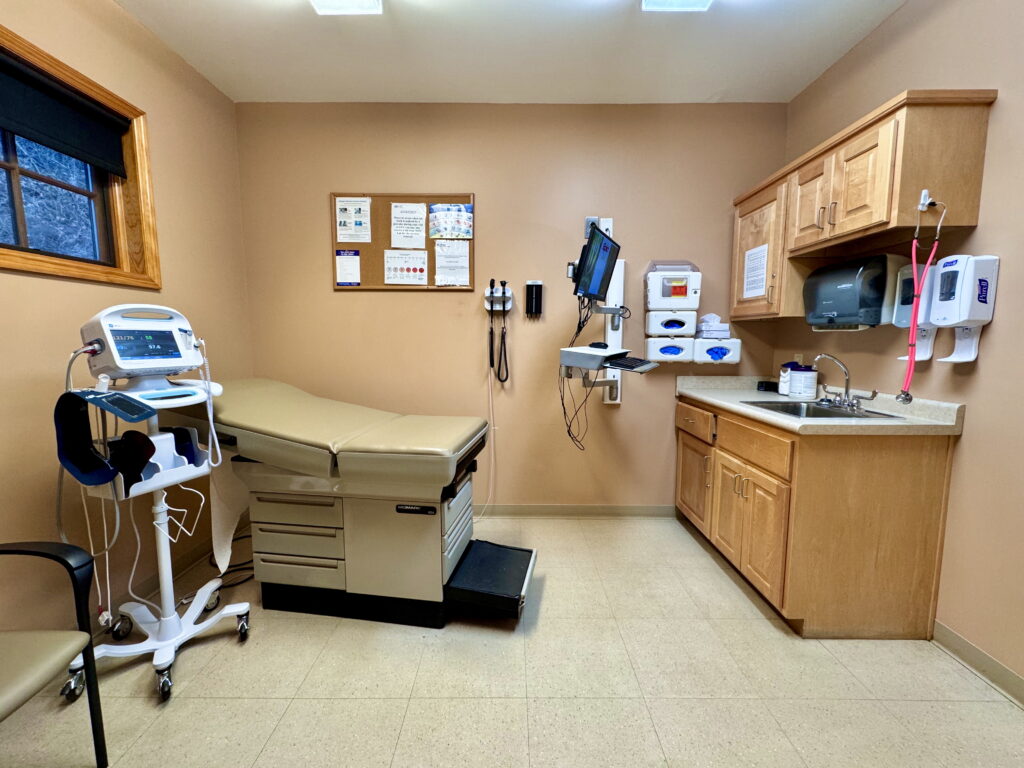You know that sneaky feeling when you realize you’ve been paying for a streaming service you haven’t used since Stranger Things Season 2? Yeah, Medicare can be like that—but way more expensive. Between confusing plan options, sneaky surcharges, and “free perks” that aren’t really free, it’s surprisingly easy to throw money down the Medicare drain without even realizing it. And unlike that $12.99 Netflix charge, these overpayments can add up to hundreds (sometimes thousands) a year.
But don’t stress—this isn’t another dry guide full of Medicare mumbo jumbo. We’re breaking down the red flags that scream “you’re overpaying,” in real-talk terms. Whether you’re new to Medicare or think you’ve got it all figured out, these 12 signs might just save your budget, your sanity, and your next vacation fund. Let’s dig in and find out if Medicare is quietly ghosting your wallet.
1. You’re Still Paying the Full IRMAA Surcharge

If you make more than your neighbor’s Uncle Bob (and by that I mean over $106,000 as an individual or $212,000 jointly), you’ve probably been slapped with the Income-Related Monthly Adjustment Amount surcharge on Parts B and D. That extra fee can range from an eye-watering $74 up to $443 per month on Part B alone! But here’s the twist: if your income dipped due to a life-changing event—think divorce, job loss, or even a hefty inheritance tax hit—you can appeal to lower it. Just fill out Form SSA-44 with the Social Security office to get your surcharge trimmed back to reality, per the SSA. Make sure to act fast—IRMAA adjustments aren’t retroactive beyond that look-back period, so missing the window means more money down the drain.
Still unsure how to even start the appeal? Call 1-800-772-1213 and ask an SSA rep to guide you through the “life-changing event” maze. Don’t let a past-income spike keep draining your account—dial in, appeal, and reclaim those dollars!
2. You’re Enrolling in a Medicare Advantage Plan Without Comparing Base Rates

Medicare Advantage (MA) might promise extra dental, vision, or gym perks, but those perks carry a cost—and sometimes it’s more than Original Medicare plus a Medigap policy. In 2019, the Medicare program spent $321 more per MA enrollee than if that same person stayed in traditional Medicare, per Kaiser Family Foundation. Translation: you’re funding the private insurer’s marketing budget more than your own care.
Before you swipe “Enroll,” plug your zip code into Medicare.gov’s Plan Finder to compare estimated annual costs—including premiums, deductibles, and out-of-pocket caps—against Original Medicare plus a Medigap plan. Don’t get star-struck by shiny perks; focus on actual expected spend. Remember: no network restrictions + predictable costs can be way more wallet-friendly than a shiny zero-premium MA plan.
3. You’re Clinging to a Medigap Plan You Don’t Need Anymore

You signed up for a Medigap “G” or “N” plan back when you rock-solidly knew you’d be in Original Medicare. But now you’re smitten with a Medicare Advantage plan that already covers copays and coinsurance. Yet you’re still shelling out $100+ a month for that Medigap. Sound familiar? Per AARP, many beneficiaries accidentally double-up on coverage, paying two premiums for the same benefit.
If you’ve officially switched to MA, call your Medigap insurer and cancel the policy (during the Annual Enrollment Period or within 12 months of MA enrollment to avoid underwriting). Otherwise, you’ll keep paying—and insurers typically make it too easy to auto-renew. One click, and you’re married to that extra premium for another year. Break up with unnecessary coverage and pocket the savings.
4. Your Part D Drug Plan Doesn’t Match Your Med List

You picked a Part D plan years ago and never looked back. Now that generic heart meds cost you $15 at the pharmacy, you’re shelling out $50. Sound off? That’s a formulary mismatch. NerdWallet points out that formularies change annually, so a plan that once covered your brand-name migraine drug inexpensively may shove it to costly tiers the next year.
Pro tip: each October, review your drug list against plan tier placements on Medicare.gov. A $20 premium plan with awesome generic coverage can save you hundreds compared to a $0-premium plan that skyrockets your out-of-pocket costs. Don’t be lazy—open that enrollment window and pick the plan that actually protects your wallet.
5. You Got Hit With That Sneaky Late-Enrollment Penalty

Missed your Initial Enrollment Period for Part B because adulting got real? Prepare to pay an extra 10% penalty for every 12 months you delayed—forever. Yup, even if you finally sign up three years later, you get a 30% surcharge on the standard premium. According to MarketWatch, some folks end up paying nearly double the premium simply because they snoozed.
Lesson learned: set a calendar alert six months before you turn 65 to handle your Part B (and Part D) signups. If life threw you a curve—say, you had employer coverage past 65—file for a Special Enrollment Period within eight months of losing that coverage to dodge the surcharge. Otherwise, kiss extra dollars goodbye.
6. You’re Paying for a Dental or Vision Rider You Never Use

Insurers love to bundle “extra” dental, vision, and hearing riders onto your Medicare Advantage plan like overpriced option packages. But if you never actually see the dentist through your plan or you’ve got a sweet dental discount card elsewhere, you’re essentially paying for friends you rarely hang out with.
Check your claims and benefits detail to see how often you tap those rider services. If it’s less than once a year, consider dropping the rider (during open enrollment) and buying standalone dental or vision coverage instead. A la carte can be way less expensive than “all-you-can-eat” that you hardly touch.
7. Your Plan’s Overpriced Geographic Rate Zone

Not all MA or Medigap rates are created equal—premiums can swing by hundreds depending on your county. Insurers carve up states into “rate regions,” and if you live in the priciest slice, you’ll pay a premium tax even if your neighbor across the street pays half.
Shop all plans within your zip code (and adjacent zip codes, if you can), because rural or less-competitive counties sometimes have bargain plans you can qualify for via a small move or P.O. Box change. It sounds minor, but triggering a different rate region might slash your monthly tab by $30–$50.
8. You Didn’t Maximize Free Preventive Perks

Original Medicare covers a slew of preventive services at no cost—annual wellness visits, mammograms, colonoscopy screenings after a “Welcome to Medicare” exam, even some vaccines. Yet if you skip them because you think they’re out-of-network charges, you lose a chance to catch issues early and avoid higher downstream costs (both health- and wallet-wise).
Stay on top of your no-cost perks via Medicare.gov’s preventive schedule. A free flu shot today could save you hundreds in ER bills if you catch a nasty bug—plus, preventive care often reduces future premiums by keeping you healthier longer.
9. You’re Riding Out a “Guaranteed Issue” You Qualified for Then

When you switch plans under guaranteed issue rights—say, moving to a new county—insurers can’t jack up your premiums. But if you stay on that plan past that protected period, they can raise rates on you just like anyone else.
Check your plan’s offer letter to see if you ever exercised guaranteed issue. If you did more than a year ago, you’re now full-price. Time to jump back into the Annual Enrollment Period and find a better deal. It’s also smart to set a calendar reminder for next year’s window so you don’t accidentally lapse back into an unprotected status. You can reach out to your state’s SHIP (State Health Insurance Assistance Program) for free, personalized counseling on guaranteed-issue opportunities. And remember, even if you loved that plan’s network, the rate hike might be an easy excuse to shop around for a newer, more budget-friendly option.
10. You’re On a High-Deductible Medigap You Rarely Hit

Some Medigap plans have $2,780 deductibles—great if you never use many services, but awful if you do. Conversely, Plan F (no deductible) might look pricier but could be cheaper if your medical bills exceed that threshold.
Run your claims history through Medicare.gov’s cost calculator to see which Medigap option would’ve cost you less last year. Then pick the smarter plan during the fall window. If you rarely hit that deductible, consider switching to Plan G or even a lower-cost Plan M to balance premium vs. out-of-pocket risk. Don’t be afraid to draft a quick spreadsheet breaking down last year’s costs by service type—that clarity can highlight if you’re paying for coverage you never tap. And if your health needs change, just remember you can revisit your Medigap choice each open enrollment period.
11. You Forgot to Ditch That Legacy Employer Plan

If you kept your retiree coverage alongside Medicare without waiving part of the premium, check for duplicate coverage penalties. Some retiree plans automatically bill you 100% of the cost unless you show proof of Medicare coverage.
Call your HR or benefits administrator and ask for a “Coordination of Benefits” review. You might get a refund—or at least stop double-dipping on premiums. While you’re at it, request a detailed explanation of how your retiree plan coordinates with Medicare to avoid surprise bills. If the admin process feels like a maze, enlist your company’s benefits liaison or even a trusted family member to help gather the necessary documentation. And once everything’s sorted, file that proof-of-coverage certificate so the duplicate bill never reappears on your statement.
12. You Never Switched to a Low-Cost PDP

Even if you love your Part D drug plan’s mailbox delivery, premiums can balloon over time. In 2025, the average standalone PDP premium is around $33, but some sneaky plans soar past $70.
Shop around—there’s always a $0-premium plan in most areas that covers generics at low tiers. If brand names are your jam, look for a mid-range plan that gives you the best coverage-to-cost ratio. A small switch can mean hundreds in annual savings. To kickstart your search, sign up for email alerts from Medicare.gov when new plan rates drop each fall. Consider using a pharmacy price-comparison app to see which plans deliver the best copays for your specific meds. And never forget—even after enrollment, you can track formulary changes mid-year and pivot to a better plan next October if your drug list shifts.
This article is for informational purposes only and should not be construed as financial advice. Consult a financial professional before making investment or other financial decisions. The author and publisher make no warranties of any kind.








